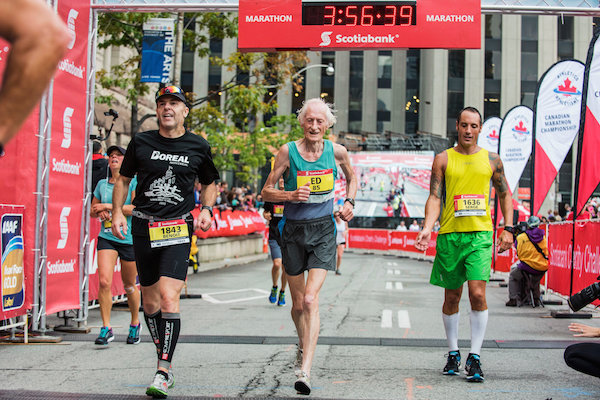"It bounced three times to the catcher," Whitlock said a few days before Christmas. "My arm is terrible."

Having set dozens of age-group records from the metric mile to the marathon, Whitlock remains at the forefront among older athletes who have led scientists to reassess the possibilities of aging and performance.
"He's about as close as you can get to minimal aging in a human individual," said Dr. Michael Joyner, a researcher at the Mayo Clinic who has studied performance and aging.
Whitlock's career has been as unorthodox as it is remarkable. For starters, he trains alone in the Milton Evergreen Cemetery near his home outside Toronto. He runs laps for three or three and a half hours at a time, unbothered by traffic or the eternal inhabitants or the modern theories and gadgets of training.
At the Toronto Marathon, he raced in 15-year-old shoes and a singlet that was 20 or 30 years old. He has no coach. He follows no special diet. He does not chart his mileage. He wears no heart-rate monitor. He takes no ice baths, gets no massages. He shovels snow in the winter and gardens in the summer but lifts no weights, does no situps or push-ups. He avoids stretching, except the day of a race. He takes no medication, only a supplement that may or may not help his knees.
What he does possess is a slight build: He is 5 feet 7 inches and weighs 110 to 112 pounds. He also has an enormous oxygen-carrying capacity; an uncommon retention of muscle mass for someone his age; a floating gait; and an unwavering dedication to pit himself against the clock, both the internal one and the one at the finish line.
"I believe people can do far more than they think they can," said Whitlock, a retired mining engineer who was born in greater London and speaks with British self-deprecation. "You have to be idiot enough to try it."
Four years ago, at 81, Whitlock underwent a battery of physiological and cognitive tests at McGill University in Montreal. One of the tests measured his VO2 max, the maximum amount of oxygen that can be consumed and used by the muscles during exercise. It is measured in milliliters of oxygen per kilogram of body weight per minute. The higher the number, the greater a person's aerobic fitness.
Read rest of the article here.



Reader Comments
to our Newsletter